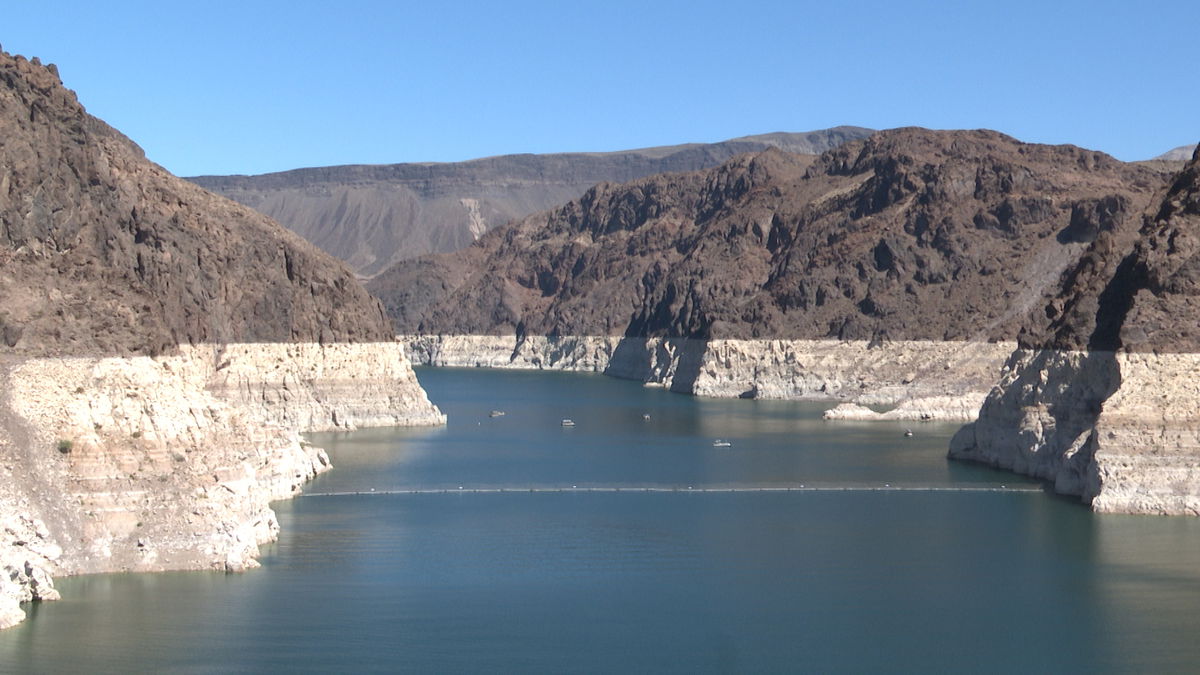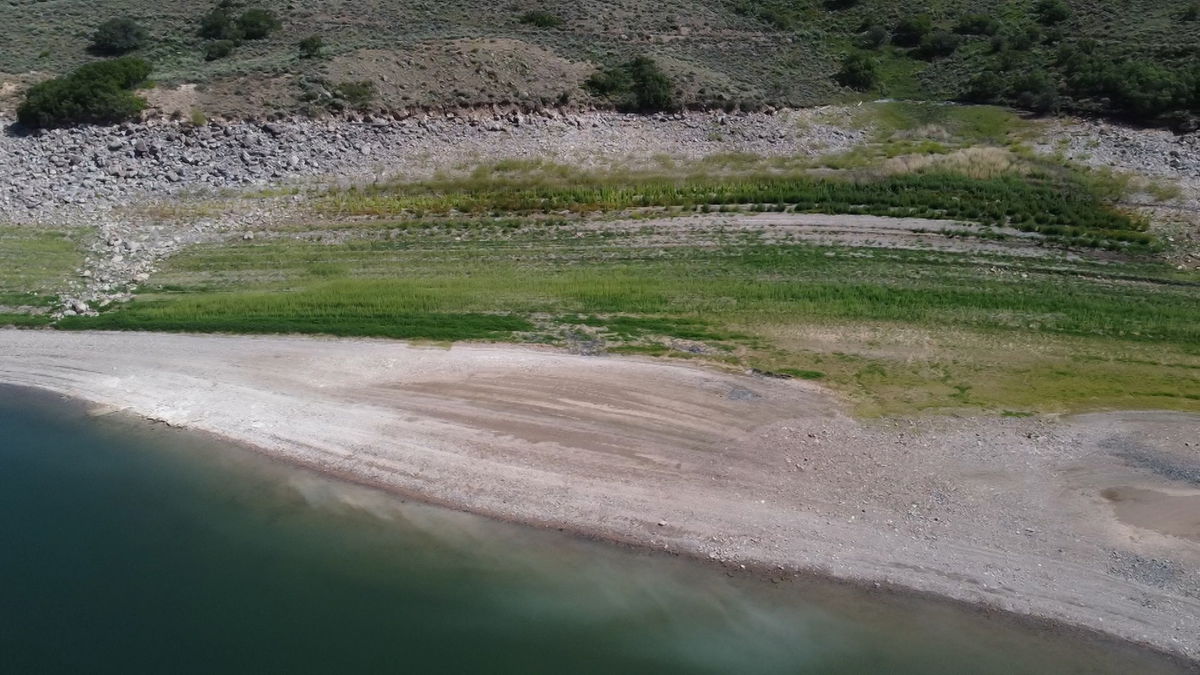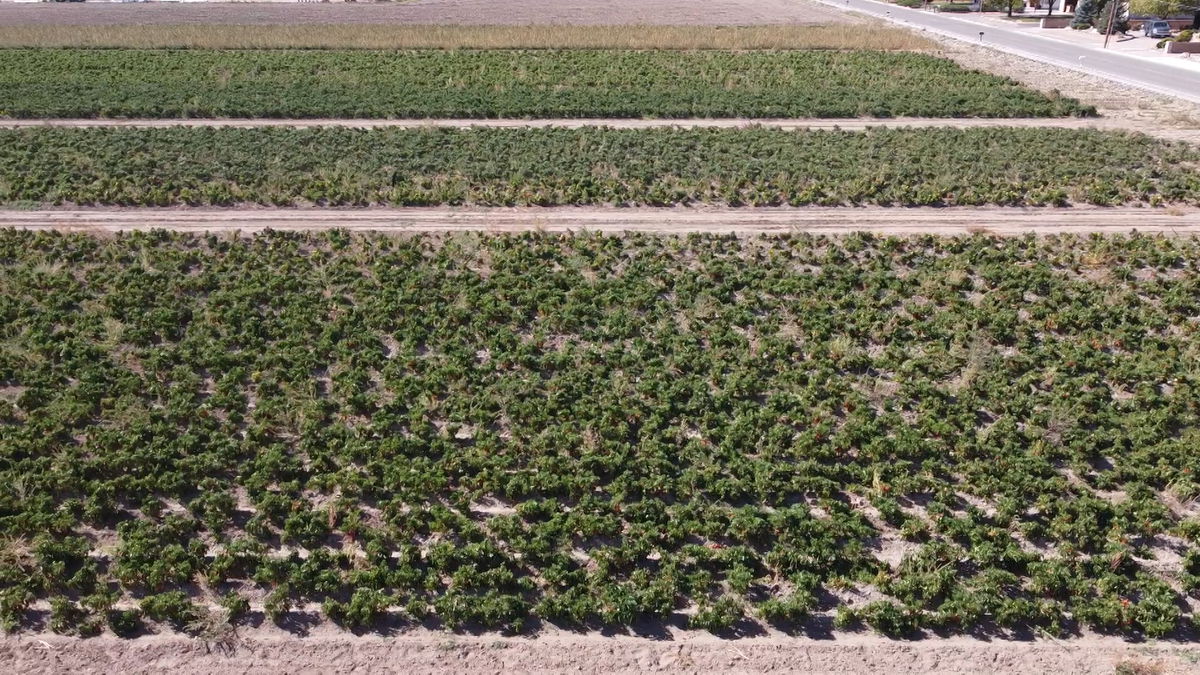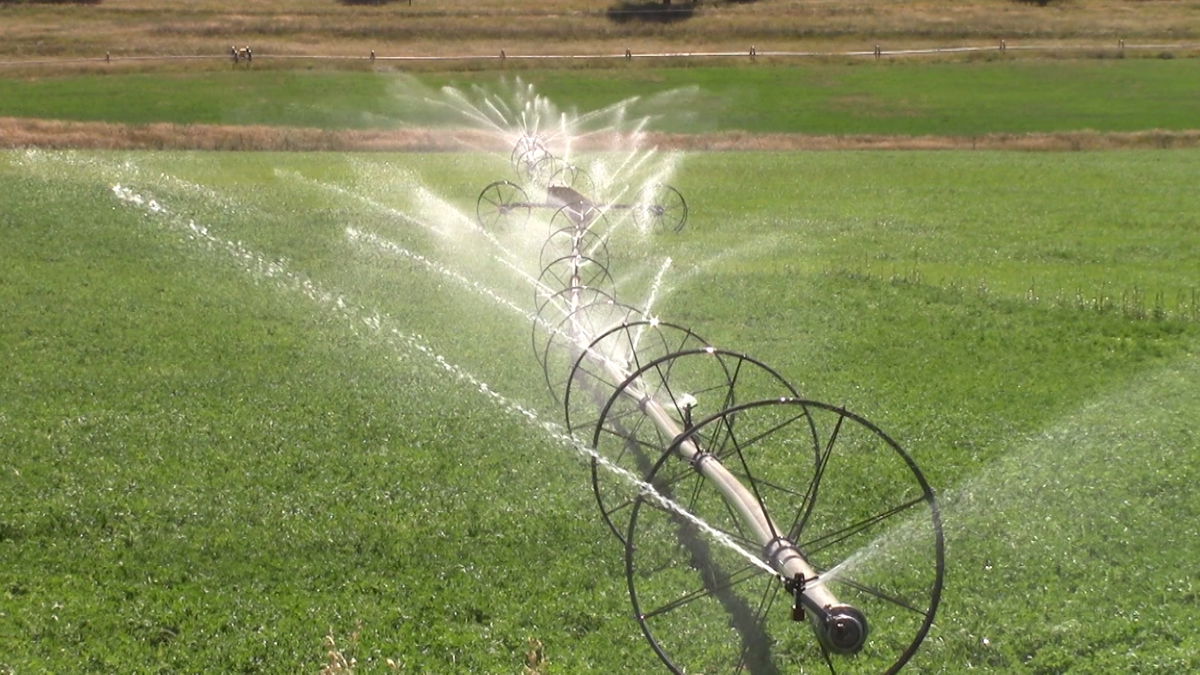A Water Crisis: Colorado agriculture facing changes as drought continues
COLORADO SPRINGS, Colo. (KRDO) -- An estimated 40 million people rely on water that originates in the Colorado River Basin, but the river can no longer keep up with demand, and it’s raising serious questions about the future of water in the west.
Surrounded by bright orange pumpkins and empty shanks of corn outside his store east of Pueblo, Shane Milberger surveys his field.

"It's been a pretty good year, as far as growing season," Milberger says.
The store sells only a small percentage of what his company produces.
The rest is sold to large retailers throughout Colorado and beyond.
For 34 years, Milberger has grown just about everything along the Arkansas River, and few understand the importance of water more than farmers like him.
“We're always concerned about water. Without water, we don't have a crop,” he says.
The water for Milberger Farms originates near Leadville, part of the Colorado River Basin.
It flows into Lake Pueblo and is let out into the Bessemer Ditch, which is used to irrigate thousands of acres including his along the Highway 50 corridor.
The headwaters of the Colorado River are near Estes Park, and it flows southwest through Grand Junction, Utah, Arizona, Nevada, California, and eventually across the border into Mexico.

About 90% of the water in the river comes from snowpack in Colorado.
Twenty-two years of drought, combined with exploding populations in Colorado and throughout the southwest have led to record low levels at both Lake Powell in Utah and Lake Mead outside Las Vegas.
Lake Mead is the nation’s largest reservoir, but the expanding white bathtub ring of mineral deposits is probably the most visual evidence of the river's decline.

“The situation along the Colorado River is dire,” says CU Professor of Natural Resources Mark Squillace, “and I'm not sure it's going to get better, ever.”
Squillace says the situation at these reservoirs is critical.
As of November, Lake Mead is currently at 34% capacity, and power generation at Hoover Dam is down 25% due to the lack of water pressure flowing through the turbines.
To avoid a similar loss of power at Lake Powell, the Bureau of Reclamation recently called for a massive release of water from Blue Mesa Reservoir outside Gunnison, bringing that lake down to its lowest level since the 1980s.

“Both reservoirs [Mead and Powell] have never been in this bad shape,” says Squillace, “Even with a really good snow year, it's not really coming back where people want it.”
Earlier this year, for the first time ever, the federal government declared a tier-one water shortage along the river, triggering cuts for the state of Nevada, farmers in Arizona, and Mexico.
BOR Spokesperson Patricia Aaron explained that there is the potential for additional cuts.
"We have level one, level two, and level three. We've just declared a shortage level one for next year, and we're hoping to be able to keep it there," Aaron told KRDO.
However, many climate experts believe that Lake Mead and Lake Powell will only drop further, and that the federal government may have to impose another round of water reductions by as early as next year.
The most recent reductions did not impact Colorado, but the next round of cuts could, although it’s not clear exactly how much.
“Well, we don't know,” Sen. Michael Bennet told KRDO. “It won't be good. It would have a terrible effect potentially on agriculture, terrible effect on our economy.”
Shane Milberger predicts cuts in Colorado would have a harsh impact.
“You will see the 20,000 acres that's farmed under the Bessemer Ditch probably drop down to 10,000 or less. My farm, we'll be farming probably 20% of what we do today,” Milberger said.

If that happens, Milberger believes the shortage of crops will dramatically drive up the cost to consumers, including "price increases that nobody ever dreamed of seeing."
Bennet agrees that water reductions would have a cascading effect.
Nobody's going to like the outcome here unless we find a way to work together. No one,” Bennet says.
Bennet recently took a rafting trip with Utah Senator Mitt Romney and other leaders along the river. The goal was not to resolve the water crisis but to create a starting point for some very difficult discussions and decisions.
In Colorado, 85% of the water goes toward agriculture, so farming would seem to have the most to give.

“A lot of the water that cities get is going to have to come from agriculture, and we've known that for quite a long time,” says Squillace.
That reality makes the agriculture community nervous.
Following a speech in Boulder in October, US Secretary of Agriculture Tom Vilsack admitted that the industry in Colorado has room to improve.
“Farmers need to be challenged to produce more, but not to use more,” he told KRDO.
Vilsack believes farmers can accomplish that by embracing more drought-resistant crops and trying new methods of irrigation where it's possible.
“Instead of flooding an entire field, you use drip irrigation in an effective and efficient way, potentially, to minimize the amount of water, but to maximize your ability to grow your crop,” he explained.

Milberger, however, believes farmers are already doing more with less than ever before.
“I think the farmers are doing their part more than everybody else,” he says.
He believes if people in the desert climates of western states have the most problems growing crops, or supplying their homes, then that is where the solution should start.
“They need to be the first ones sacrificing, not the growers, because pretty soon all you're going to have is a pretty lawn and nothing to eat,” he says.
Bennet agrees that agriculture shouldn’t be the sole sector to cut back.
“We rise and fall together, and I think the solution is going to depend on all of us. We shouldn't just burden one sector of the economy,” Bennet said.
Unfortunately, the amount of time remaining to figure out a solution is quickly evaporating.
“We just can't afford to lose more water from the Colorado River,” says Squillace.
And everyone agrees it will take a lot more than a few good snowfalls to bring the river back.
“We are in a secular change, because of climate change, and we're going to have to address these issues together,” says Bennet.
If you're thinking that the dwindling Colorado River is a problem for mainly the western half of the state, think again.
Colorado Springs has 25 reservoirs spread across the central and southeast part of the state, but 70% of the water that fills them comes from the Colorado River Basin.
The crisis along the river, combined with the exploding population in Colorado Springs, is now forcing the city’s water provider to accelerate certain drought contingency projects.
Part 2 of our series will focus on how CSU is preparing for that reality.


